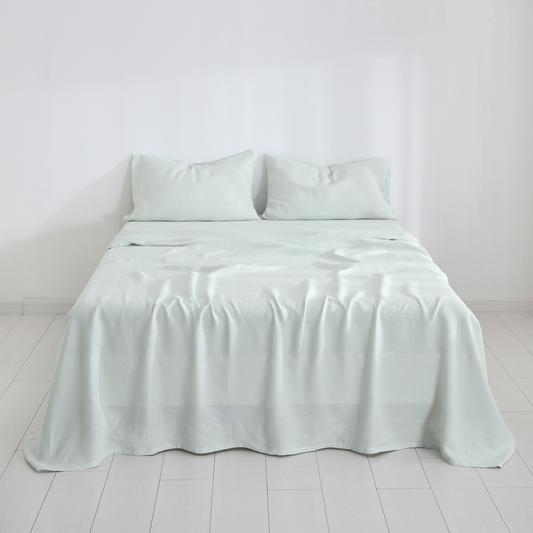For years, Oscar has been deeply involved in natural materials and sustainable fashion. He advocates for brands dedicated to eco-friendly materials. Embracing 100% hemp has been a mission.
However, the Hemp Cotton blend doesn't always yield the most eco-friendly outcomes.
Enter Jo Dope, your champion of climate action and pure hemp sustainable materials.
We are dedicated to be a sustainable brand that reduces carbon footprints and enhances water sustainability.
Your support makes you the champion of environmental consciousness. Your commitment is celebrated and cherished.
As we explore supply chains and sustainable products, it's hard to ignore cotton's enduring presence. Its hard not to compare and when making a purchase, investing its hard not to think of the money.
Comparing to Polyester, a plastic-based material, remains which oddly remains popular. "Why anyone would want to sleep, walk, or be wrapped in a plastic bag bewilders me." Cotton is some what competitive in the landscape of sustainable materials. But is it really?
Why does cotton maintain its popularity?
Cotton has dominated the textile industry for a century. It has pushed aside hemp and other eco-friendly materials. This is due to various historical, economic, and social factors. Here are some reasons:
Cotton's widespread use across various cultures made it a natural choice as textile technology evolved. It had been culturally entrenched for centuries.
Cotton's softness and versatility made it a darling in clothing and textile production. This solidified its position in the industry.
Regulatory restrictions have hindered hemp's progress. Legal hurdles are due to its association with marijuana, especially in the United States. This led to cultivation restrictions and limited advancements.
Economic factors supported cotton's production and distribution. They established supply chains and economic systems. This made it more profitable and appealing to investors.
Technological advancements in cotton overshadowed hemp's potential due to legal and societal constraints.
Adapting machinery and processes optimized for cotton to work effectively with hemp posed a challenge. This slowed its adoption in the textile industry and sustainable materials category.
Where is cotton harming the environment?
Cotton cultivation has had negative environmental impacts in various regions around the world, primarily due to intensive farming practices, heavy pesticide and water usage, and soil degradation. Some regions where cotton cultivation has significantly impacted the environment include:
- Australia:The Murray Darling basin has been depleted, with the rains yearly meant to migrate south through the river systems, and the southern hemisphere's biggest irrigation farm fighting it out. Fish kills, pesticides and an entire river system are gone due to cotton farming in southeast Queensland, no one can tell me that Australian Cotton is good for the environment.

-
Uzbekistan: In the Aral Sea region, once the world's fourth-largest lake, cotton farming extensively diverted water from the rivers feeding the sea, causing drastic shrinkage and environmental devastation. This led to soil salinity, biodiversity loss, and severe health issues for local communities due to pesticide use.

- Central Asia: Beyond Uzbekistan, cotton farming in other Central Asian countries has also contributed to environmental degradation and water scarcity issues, affecting the Aral Sea basin and surrounding regions.
- India: Certain cotton-producing areas in India have faced environmental challenges due to the use of pesticides and water-intensive farming practices. This has led to soil degradation, reduced groundwater levels, and health issues for farmers exposed to chemicals.
- China: Extensive cotton farming in certain regions of China has led to soil erosion, water pollution from pesticides and fertilizers, and depletion of freshwater resources, causing significant environmental damage.
- United States: Historically, cotton cultivation in the southern United States led to soil depletion and erosion due to intensive farming practices. While advancements have been made in adopting more sustainable practices, the legacy of past practices still affects some areas.
Is there still slavery in textiles?
Regions where reports and concerns about exploitative labor practices in cotton production have emerged include:
- Uzbekistan: The cotton industry in Uzbekistan has faced scrutiny for many years due to the government's use of forced labor in cotton harvesting. There have been reports of mobilizing citizens, including children, teachers, and government workers, to work in cotton fields during harvest seasons.
- Turkmenistan: Similar to Uzbekistan, Turkmenistan has faced allegations of forced labor in cotton fields, with reports of citizens being compelled to work under coercive conditions during harvests.
- Certain parts of India: In some areas of India, including the state of Gujarat and other cotton-producing regions, instances of exploitative labor practices, including debt bondage and child labor, have been reported in cotton farming.
- Other countries in Central Asia and parts of Africa: Some regions in Central Asia and African countries with significant cotton production have faced concerns regarding labor exploitation, although the extent and prevalence may vary.
Is Cotton a Sustainable Material?
Cotton's sustainability hinges on its cultivation, harvesting, and processing methods. Here's what to consider:
Conventional cotton uses heavy pesticides and harms the environment with excessive water use. They also harm workers' health. Organic cotton is grown without synthetic pesticides. It relies on more sustainable farming practices, making it an eco-friendly option.
Water sustainability is important for cotton due to its high water consumption. Sustainable practices, such as efficient irrigation and rainwater harvesting, can help. Initiatives focusing on reducing water usage make cotton production more sustainable.
Soil Health: Intensive cotton farming depletes soil nutrients. Organic farming methods and crop rotation maintain soil health in cotton-growing regions.
Fair Labor Practices: Ethical treatment of workers is vital in sustainable cotton production. Certifications like Fair Trade ensure fair wages and safe working conditions.
Biodiversity: Monoculture in cotton farming harms biodiversity. Diverse crop integration fosters a healthier ecosystem. Preserving natural habitats within cotton fields also helps.
Organic hemp is on its way with your support...
Efforts to enhance cotton's sustainability include initiatives like the Better Cotton Initiative (BCI). It promotes sustainable farming practices globally. Certifications like Global Organic Textile Standard (GOTS) and Organic Content Standard (OCS) ensure that cotton products meet strict environmental and social criteria.
Certifications in the textile industry, ensuring sustainability and ethical sourcing, include:
- GOTS (Global Organic Textile Standard)
- OCS (Organic Content Standard)
- OEKO-TEX Standard 100
- USDA Organic
Can Hemp Overtake the Cotton Industry?
Hemp holds advantages over cotton, making it a promising alternative in specific contexts:
- Environmental Impact: Hemp requires fewer pesticides and water, making it more eco-friendly.
- Sustainability: Hemp's quick growth and soil-preserving qualities make it a sustainable crop.
- Versatility: Hemp's durable fibres lead to longer-lasting textiles.
- Soil Health: Hemp cultivation enhances soil health.
How will you vote?

Knowing this now, or refreshing on this information do you think “Hemp is Expensive?”. I find it hard to stomach alot of this information though with eyes wide open, I have to say when I write an article like this about polyester I will end up curled up in a ball thinking how deep the plastic runs within me. So is cotton the lesser of two evils? Or is it humans, we invest in ? Is is the path to a future with Pure hemp products taking sustainable brands to the next level on our way to utopia?
Functionally, the blending of cotton and hemp, we have spoken about before, its quite regularly that the manufacturing uses a shorter fibre of cotton, this is scratchy, this is why people have for along time also found hemp to be uncomfortable, partnered with the lack of technology for hemp.
This is why we stay pure. This is why we value your support in our 100% hemp bed linen. If your trying to limit your carbon footprint, increase the sustainability of your home, our organic hemp - is the perfect option, with very little processing at all to produce the product its going to be a game changed in the future of sustainable materials.








